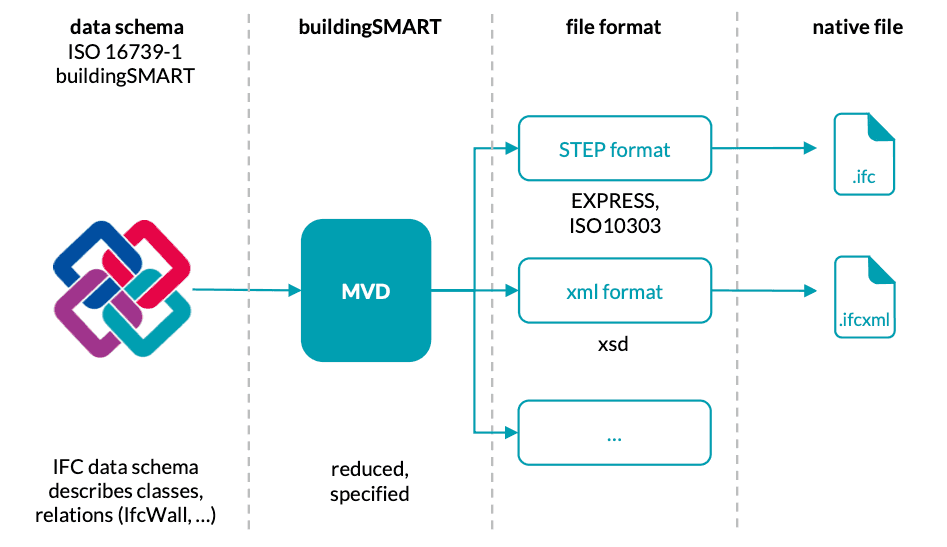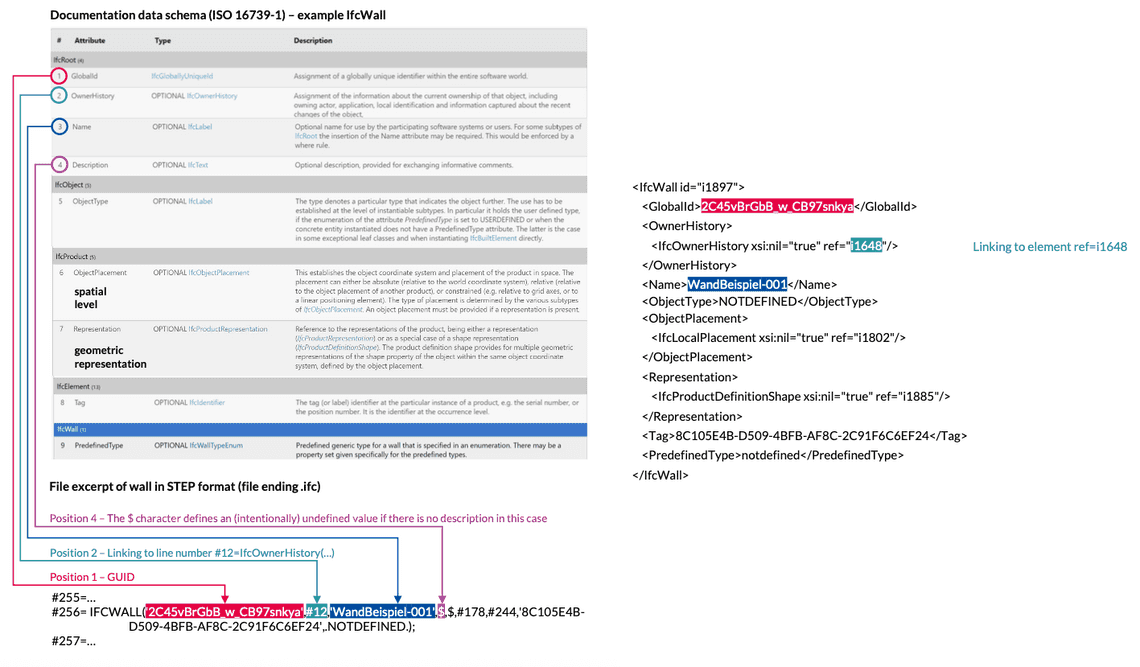Table des matières
At the core of openBIM lies the IFC Schema (Industry Foundation Classes), the standardised data model that enables the exchange of building and infrastructure information across software platforms. If openBIM is the method, IFC is the common language it relies on.
This article is the first of two parts focused on IFC. Here, we will explore the history of its development and outline the basic principles of the schema and file formats. In the next part, we will look at the internal structure of IFC files in more detail.
A Short History of IFC
The origins of IFC trace back to the late 1980s with work on STEP (ISO 10303), which provided a neutral way to describe product data. It introduced EXPRESS, a modelling language that still powers IFC today.
In 1994, major software vendors, including Autodesk, Bentley, and Nemetschek, founded the International Alliance for Interoperability (IAI), now known as buildingSMART International. Their goal was to create a vendor-neutral format for exchanging building data.
Key milestones include:
- IFC1.0 (1996): the first release, focused on basic building elements.
- IFC2.0 (1999): quickly became outdated.
- IFC2x (2000s): a reboot with a more flexible structure; the “x” stood for “extendable” (and meant “we don’t want to call it IFC3 yet”).
- IFC2x3 (2006): the most widely used version to date, especially for building projects.
- IFC4 (2013): introduced a more consistent structure, better geometry, and reference views.
- IFC4.3 (2023, standardised as ISO 16739-1:2024): expanded IFC to infrastructure, covering bridges, roads, and railways.
Development continues with discussions about IFC5. Since IFC is still based on the STEP physical file and EXPRESS schemas, its flexibility is limited. The future will likely involve graph-based models and linked data approaches, which will enable faster queries, better integration of digital twins, and more flexible ways to manage relationships between data objects. ⏳📂
IFC Schema and File Formats
It is important to distinguish between the schema and the file 📖💾:
- The IFC Schema defines the concepts and relationships. It is the data model that describes classes such as IfcWall or IfcDoor, their attributes, and how they connect to other elements.
- An IFC File (.ifc) is an instance of this schema—a concrete dataset containing actual project information.

Supported File Formats
- STEP Physical File (.ifc): the most widely used format; plain text and structured for interoperability.
- ifcXML (.ifcxml): an XML-based representation; machine-friendly but rarely used in practice.
- ifczip (.ifczip): a compressed IFC file, typically used for large models.

IFC Entities and Core Concepts
The schema is built on an object-oriented structure. 🧱🔗
- Entities: Core building blocks, e.g., IfcWall, IfcBeam, IfcSlab.
- Abstract Entities: Organisational levels such as IfcRoot or IfcElement. They do not appear directly in files but provide common attributes (e.g., GlobalId) to their subclasses.
- GUIDs: Each object receives a Globally Unique Identifier to maintain consistency across models and updates.
- Property Sets (Psets): Collections of properties linked to entities. For example, Pset_WallCommon defines attributes such as fire rating, load-bearing capacity, and acoustic performance.
- Relationships: Connections between entities are explicitly modelled. For instance, IfcRelContainedInSpatialStructure links walls to storeys, and IfcRelFillsElement connects a door to its opening.
Conclusion (Part 1)
The IFC Schema has evolved from its origins in STEP and EXPRESS to become the backbone of openBIM interoperability. Today, it is used not only for building projects but also increasingly for infrastructure.
In this first part, we discussed the development of IFC and the basic concepts of the schema and formats. In the second part, we will take a closer look at the internal structure of an IFC file, including the header, data section, and how entities, properties, and relationships are organised. ✅📌
I’d love to hear your thoughts: how do you currently work with IFC files in your projects?
